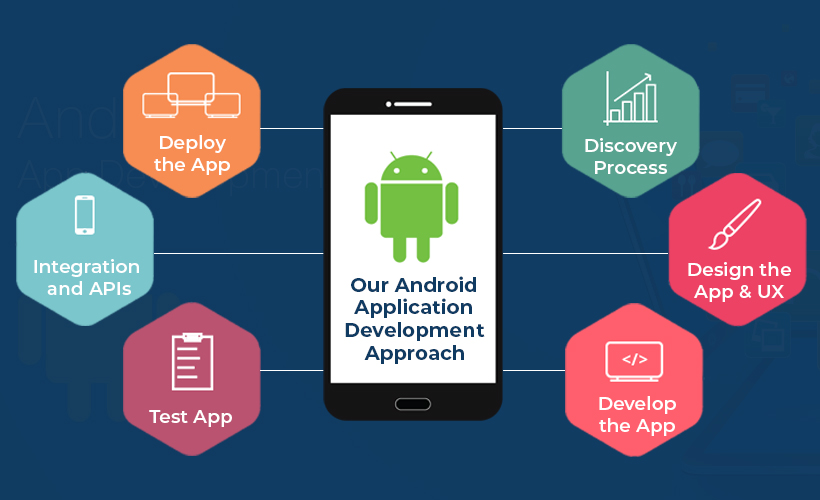In the ever-evolving world of mobile apps, building an app is only part of the equation. The real challenge lies in generating revenue from the app once it’s live. Whether you’re an indie developer or a part of a large team at a mobile app development company in the USA, monetizing your Android app effectively is crucial to its success. The good news is that there are several monetization strategies to explore. In this blog, we will go over some of the most effective ways to monetize your Android app and provide you with the tools needed to start generating revenue.
1. In-App Advertising
One of the most common and straightforward ways to monetize an Android app is through in-app advertising. By displaying ads within your app, you can earn money each time a user interacts with them, clicks on them, or even just views them. The most popular networks for in-app advertising include Google AdMob, Facebook Audience Network, and others.
How It Works:
- Ads are shown to users while they are using the app.
- Developers get paid either by impressions (CPM), clicks (CPC), or actions (CPA).
Why It Works:
- Minimal effort required to set up.
- No direct interaction with the user for monetization.
- Suitable for apps with a large user base or apps with frequent usage.
However, it’s important to maintain a balance between user experience and ads. Too many ads can annoy users, which may result in lower retention rates. A mobile app development company in the USA will guide you on how to place ads effectively without disrupting the user experience.
2. In-App Purchases (IAP)
In-app purchases allow users to buy additional content, features, or services from within the app itself. This is one of the most effective ways to monetize apps, particularly for gaming apps, social media platforms, or productivity apps.
How It Works:
- Users can purchase virtual goods, additional levels, or unlock premium features.
- Types of IAP models include consumables (e.g., virtual currency), non-consumables (e.g., permanent features), and subscriptions (e.g., recurring payments for premium content).
Why It Works:
- Users only pay when they want additional value or content.
- It’s a great fit for games, apps with added value, or services with premium offerings.
If your app offers something unique, such as a game with extra levels or an app with premium features, IAP can be a powerful revenue stream.
3. Subscription Model
The subscription model is perfect for apps that provide continuous value over time, such as news apps, fitness tracking, or premium content services. Offering a recurring subscription will ensure that you have a steady revenue stream.
How It Works:
- Users subscribe for weekly, monthly, or yearly access to exclusive features or content.
- Apps with subscription models can offer a freemium model, where users can access limited features for free but must pay for premium features.
Why It Works:
- Predictable and steady cash flow for your app.
- Ideal for apps that offer content or services that evolve over time.
Examples:
- Media and content apps like Netflix or Spotify.
- Fitness apps that track progress and offer new workouts.
4. Paid App Model
Charging users to download your app is one of the simplest monetization strategies. With this model, users pay a one-time fee to download your app and have full access to its features.
How It Works:
- Users purchase the app upfront before using it.
- All content or functionality is typically available upon download.
Why It Works:
- Quick revenue generation upon app launch.
- Ideal for apps that offer significant value or a unique feature.
However, this model has fallen out of favor due to users’ tendency to shy away from paid apps, preferring free alternatives with in-app purchases or ads. Still, this model can be successful for apps with high-quality content or unique functionalities.
5. Sponsorship and Partnerships
Partnerships and sponsorships can be another highly effective way to monetize an Android app. By collaborating with other brands, you can integrate their content or services into your app, allowing them to reach your audience while generating revenue for you.
How It Works:
- Partner with brands relevant to your app’s audience.
- Provide them with space in the app for advertising or product placement.
Why It Works:
- Potential for high revenue with the right partnerships.
- Works well if your app has a niche audience that specific brands want to target.
If you are working with a mobile app development company in the USA, they can help you identify suitable brands or partners to collaborate with.
6. Crowdfunding and Donations
For apps that have a unique social or creative purpose, crowdfunding can be an effective way to generate funds. If users see value in your app or mission, they may be willing to donate or fund its development.
How It Works:
- Integrate a donation system within the app or launch a crowdfunding campaign.
- Users voluntarily contribute funds to help support or maintain the app.
Why It Works:
- Ideal for non-profit or community-driven apps.
- Helps to build a loyal and supportive user base.
While this may not work for all apps, it’s an option worth considering for those with a cause-driven or niche audience.
7. Affiliate Marketing
Affiliate marketing involves promoting other people’s products or services within your app and earning a commission for each sale made through your referral. This works particularly well for apps that feature products or services in a related niche.
How It Works:
- Embed affiliate links or ads within your app.
- Earn commissions on the products purchased via these links.
Why It Works:
- Low effort once the affiliate program is set up.
- A great option for apps with a dedicated user base that trusts your recommendations.
Conclusion
There are many different ways to monetize an Android app, and the best method for your app will depend on its audience, functionality, and goals. Whether you choose in-app advertising, subscriptions, or affiliate marketing, it’s essential to think about how your users interact with your app and find a balance between providing value and generating revenue.
For those looking to develop a mobile app with a clear monetization strategy, partnering with a mobile app development company in the USA can help ensure that the app is not only functional but also designed to maximize revenue. Whether you’re building a game, a service-based app, or a content platform, a well-thought-out monetization model can significantly impact your app’s profitability.
Also read: How to Hire Android App Developers: A Guide for Businesses.



